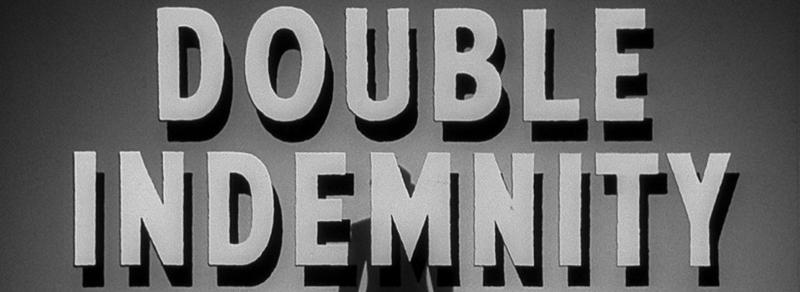
Double Indemnity
Sometimes, you just want to go back and watch an old favourite you’ve seen a million times before.
Double Indemnity is, on the face of it, a simple tale. An insurance salesman (Fred MacMurray) meets an alluring bored housewife (Barbara Stanwyck), who persuades him to kill her husband. They set up an insurance plan just before his death and plot to make a claim. A investigator from the insurance company (Edward G. Robinson) is hot on their tails, and threatens to throw a spanner in the works.
As with all simple stories, it’s about the way you tell it, and Wilder is a master at getting his material on screen. He paints a dark, troubling vision of the world, then bathes it in Los Angeles sunshine. We see the ugly side of beautiful people, and the dark underbelly of a happy place.
The lighting reflects this. It’s bold, dangerous and evocative. Characters are painted with black and white stripes, as if they are behind bars. The interiors are gloomy and atmospheric, but the exterior shots are bright and pedestrian. This reinforces the idea that anything could be happening beneath the surface. In America, everyone is trying to live the ‘dream’, some are willing to go further than others to get there.
We also see a rare example of a successful voice-over. The story is told by MacMurray’s character, Neff, through a Dictaphone. He’s confessing to his crime, which gives everything we see a ‘doomed from the start’ feeling. Neff is resigned to his fate and talks to us that way. He guides us along the way, and hides nothing. This premature revealing of the plot is daring, but gives an effective, cynical tone. We know what’s coming, but it’s human nature to watch things fail, like watching a car crash.
The dialogue, co-written by Raymond Chandler with Wilder, is a large part of what makes this a timeless classic. It’s sharp, funny and memorable. Neff is witty but meets his match in Dietrichson, Stanwyck’s character. Combined with brilliant delivery, the script adds a degree of plausibility to the story that’s often lacking in similar works. The two characters chime so well, the words seem to flow from them, it’s no wonder Neff falls for her.
This is also important in establishing the plausibility of Keyes, Edward G. Robinson’s investigator character. It would be easy to claim that he stumbles upon the solution to the crime by chance, but something about him exudes confidence. In conjunction with the voice-over, there’s a sense of inevitability about the fact that he’s going to get to the bottom of the whole affair.
Double Indemnity was a bold, ground breaking picture at the time of its release. It’s a sordid cynical tale of greed and lust, something previously unseen in Hollywood. What’s astonishing to me is how well it’s held up. Granted there’s a certain amount of intrigue to be had from watching the conception of so many cinematic conventions we now know and rely upon. You can pause and admire Wilder’s technical wizardry all you like. However, there’s also immense entertainment value still to be had from Double Indemnity, and that’s what makes it great.
Another example of Hollywood at its very best.